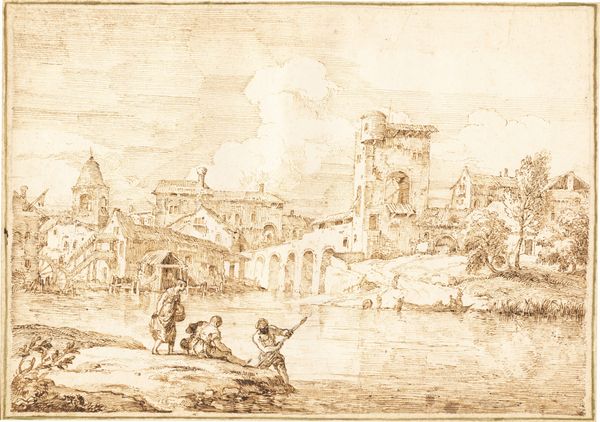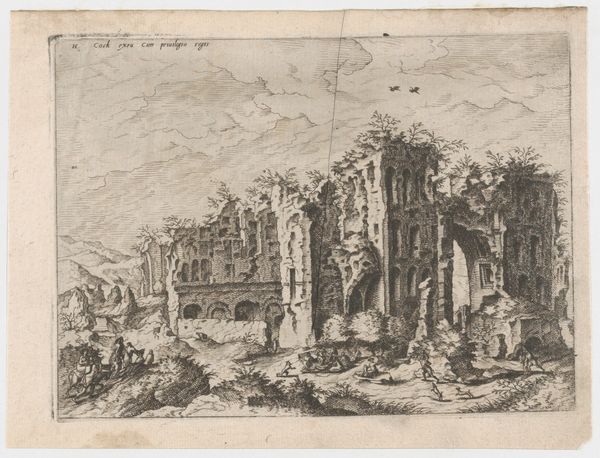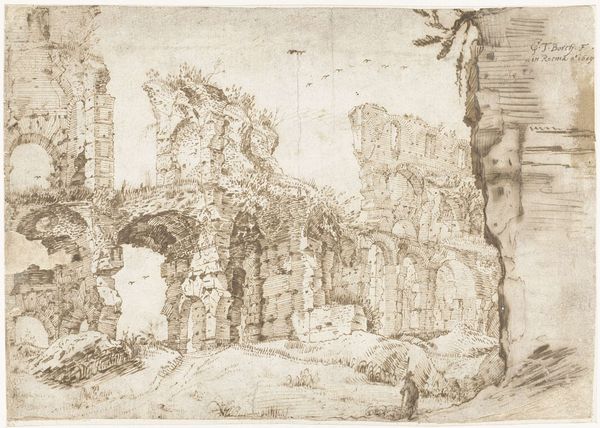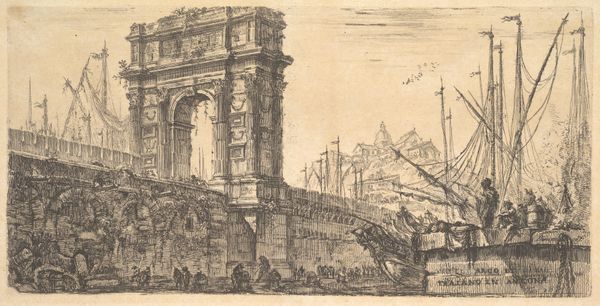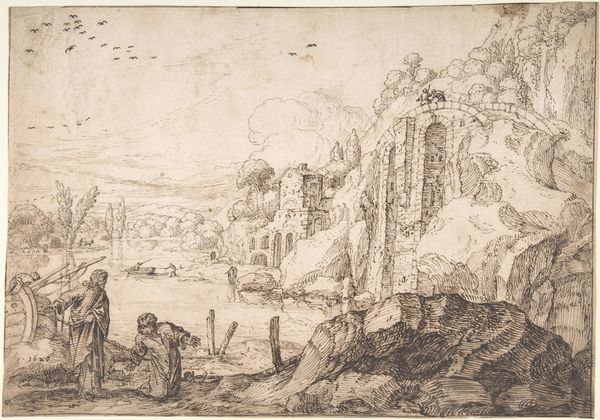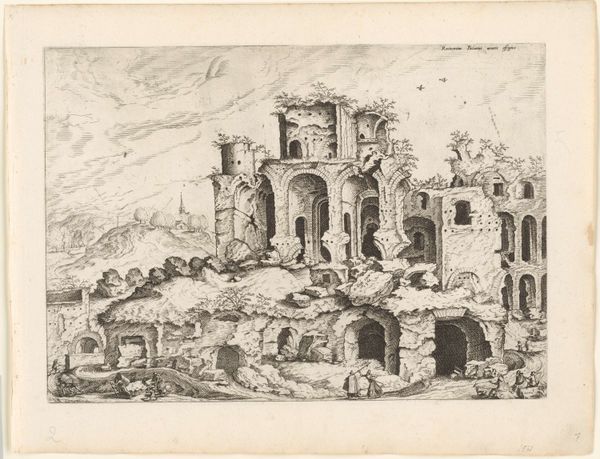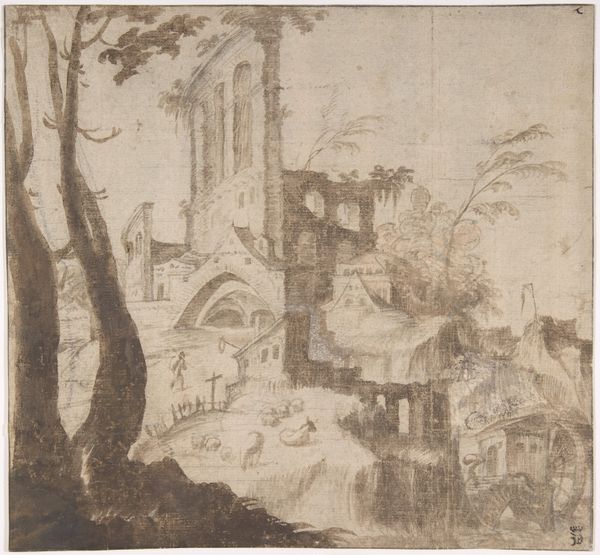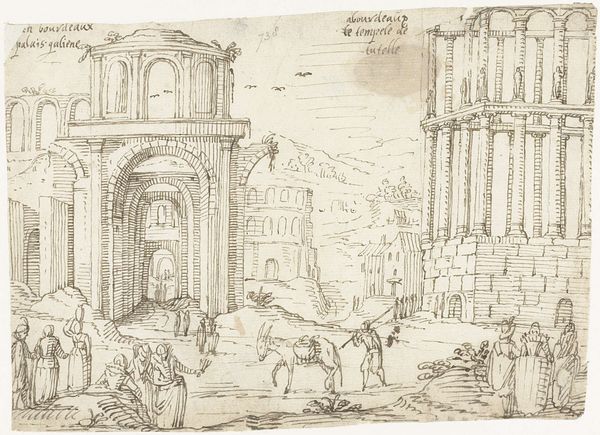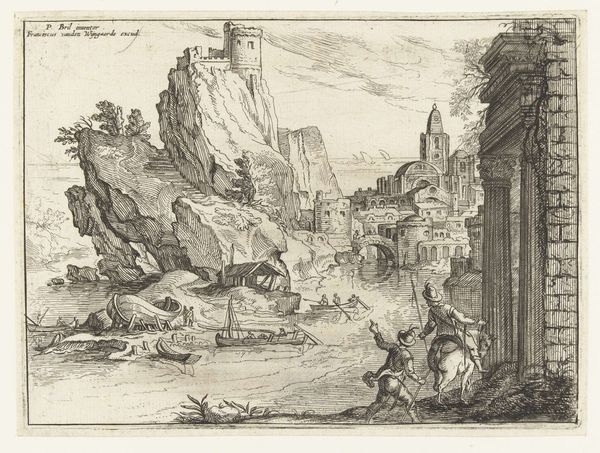
drawing, print, etching
#
drawing
#
baroque
# print
#
pen sketch
#
etching
#
landscape
#
genre-painting
Dimensions: 7.7 x 11.5 cm
Copyright: Public Domain
Editor: We’re looking at “The Collonade,” an etching by Thomas Wijck, dating sometime between 1616 and 1677. It's at the Met. I find this work evocative, presenting a world in ruins. The artist's use of line is impressive, so detailed yet gestural, don't you think? How do you interpret this piece, using just what we see? Curator: From a formal perspective, the intricate network of lines, rendered through the etching process, dictates the overall composition. Notice how Wijck masterfully uses hatching and cross-hatching to define depth and texture, primarily through line density and orientation. The interplay of light and shadow articulates the dilapidated architecture, creating a dialogue between form and decay. Editor: Yes, that use of light is key! It almost gives the structure another layer of, of erosion, almost. Do you think the choice of this medium contributes to that feeling? Curator: The very act of etching, with its inherent potential for fine detail and textured surfaces, augments the narrative of dilapidation. Consider, too, how the verticality of the columns interacts with the horizontal emphasis of the ruin mounds and horizon. It's a study in contrasts, visually enacting themes of permanence and impermanence. The texture in the groundscape, built only through line, feels barren. Do you notice how your eye bounces through the image because of it? Editor: I do, I jumped right from that barren land into the shadowed corner where that person is sitting. Thank you, I had not noticed all the nuance present. Curator: The genius here resides in Wijck’s manipulation of simple lines to conjure an evocative and thought-provoking piece. It speaks to the enduring power of formal qualities in imbuing an artwork with meaning.
Comments
No comments
Be the first to comment and join the conversation on the ultimate creative platform.

